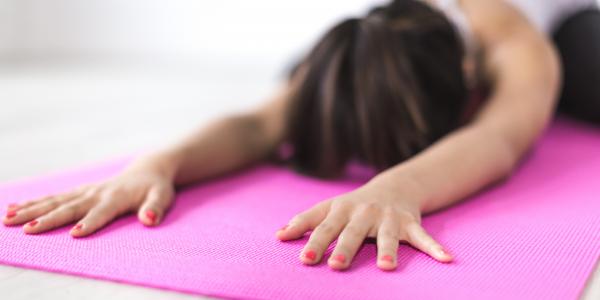Is sitting really the new smoking?

How concerned should we be about the time spent seated at work? The answer is nuanced, but one thing is clear: more movement means better health.
Over the last few years, you may have heard the phrase ‘sitting is the new smoking.’ Perhaps you already use a standing desk, or maybe your department engages in walking meetings. No doubt, many employers are shifting away from the traditional desk-and-chair office and moving towards a workplace model that integrates movement and physical activity into the workday. This is because in the past decade, numerous studies have linked prolonged sitting with heart disease, diabetes, certain cancers, and depression.
As a result, there has been an uptick in media reporting on the dangers of sitting at a desk all day. Standing desks and walking meetings are two examples of interventions that many workplaces are adopting in response. While these strategies are wonderful for combating inactivity at work, it is important to examine why experts say we avoid sitting, and what the data says about our activity levels as a predictor for negative health outcomes. Further, statements like ‘sitting is the new smoking’ can seem a bit… hyperbolic. So how much should we worry about the time we spend seated?
In a February 2017 study, scientists from Australia and the UK investigated the link between sitting and the development of type II diabetes. Lead by Dr. Emmanuel Stamatakis from the University of Sydney, the study sought to find if there were differences in sitting at work, sitting at home watching television, and sitting at home but not watching TV. The study was comprised of 4,811 people with an average age of 44, whom did not have diabetes, heart disease, or circulatory issues at the beginning of the study. 402 of those 4811 developed diabetes over the 13-year study.
The study revealed that once obesity, activity level, and other contributing factors were controlled for, neither sitting at work, or sitting at home without watching TV were associated with the development of type II diabetes. Researchers did discover a slight association with the development of type II diabetes and time spent sitting watching TV. This is because, according to authors, context matters. Sitting at an office job alone may not necessarily lead to poor health outcomes, according to a 2010 study (van Uffelen, Jannique G.Z. et al. 2010). Considering this, Stamatakis suggests that individuals with higher job status are more likely to sit at work, but also tend to have a higher socioeconomic status and in turn, lower risk for chronic disease.
On the flip side, several studies have shown that people who consume a lot of TV tend to experience higher levels of unemployment, poor mental health, unhealthy diet, and exposure to unhealthy food marketing. Stamatakis points out that time spent watching TV “involves a constellation of health risks that go uncounted. So TV Studies only tell us that excessive TV viewing is a behavior that needs to be reduced, but tells us practically nothing about the health risks of sitting.”
Stamatakis notes that an important piece of their study was that participants self-reported high levels of physical activity- an average of two hours of physical activity per day, including 43 minutes of walking. A 2016 meta-analysis (Ekelund, Ulf et al. 2016) found that “High levels of moderate intensity physical activity (ie, about 60–75 min per day) seem to eliminate the increased risk of death associated with high sitting time.” This suggests that participants who get the most exercise may be more ‘protected’ from the harms of inactivity. However, it is also important to note that the Ekelund study revealed only the highest quartile of exercisers were ‘protected’ from the ills of sitting. The group that sat the least but also exercised the least were still at higher a risk of morbidity and mortality than their peers that sat the most but also exercised the most. What does this mean in practical terms? You should strive to move more, even if you stand often. If you sit all day at work but also engage in very high levels of exercise (both intensity and frequency), your sitting habit may not be as detrimental as once thought. However, if you stand at work but don’t exercise at a high rate, you’re still at risk of negative health outcomes.
So is that standing desk the miracle cure? The answer seems to be no. Studies on standing desks have actually shown no positive measureable health benefits, with some users actually become less active after work, as they feel they’ve already completed their activity for the day. To be clear, standing at work is certainly better than sitting for 8 hours a day. Standing will improve your posture, strength, and make you more likely to move around the office. However, it would take several hours of standing each day to accomplish the same health benefits gained in one or two weekly exercise sessions. So use your standing desk as tool in your toolbelt, but don’t rely on it to change your life. Instead, focus on breaking up sedentary behavior with activities like walking meetings, stretching at your desk, or joining a lunchtime fitness class. The bottom line is that sitting itself probably won’t kill you, but chronic inactivity may. Overcoming sedentary behavior and moving more is critical to reducing your risk of disease and mortality. Rather than focusing on sensationalist headlines, Stamatakis suggests that we view sitting at work as component of a larger problem- widespread physical inactivity.
“We also need to read behind the headlines of how the media covers sitting,” says Stamatakis. “Research just published shows 30-40% of media stories on sedentary behavior promote misleading messages, such as sitting undoes the benefits of exercise. So, the first priority is to reinforce the most evidence-based message: move as often as possible, huff and puff sometimes.”
Related Articles

Want a better night’s sleep? Get Moving!
The connection between exercise and sleep is very real. This article examines current research, and how your everyday activities may be influencing sleep patterns.
.jpg)
Physical Literacy: The Foundation for a Life of Movement
Early development of physical literacy is linked to future success in sport and activity participation. In the long run, establishing active habits in children sets them on the path to happier and healthier lives.

Bend, Not Break: The Importance of Maintaining Flexibility
You may not think about it often, but flexibility impacts our everyday lives. Learn more about the physiology of flexibility and why you should consider making stretching part our your routine.

A Brief Guide to the Body's Aerobic System
Aerobic exercise is a cornerstone of physical wellness. Learn more about the function of the aerobic system and the role it plays in supporting good health.





